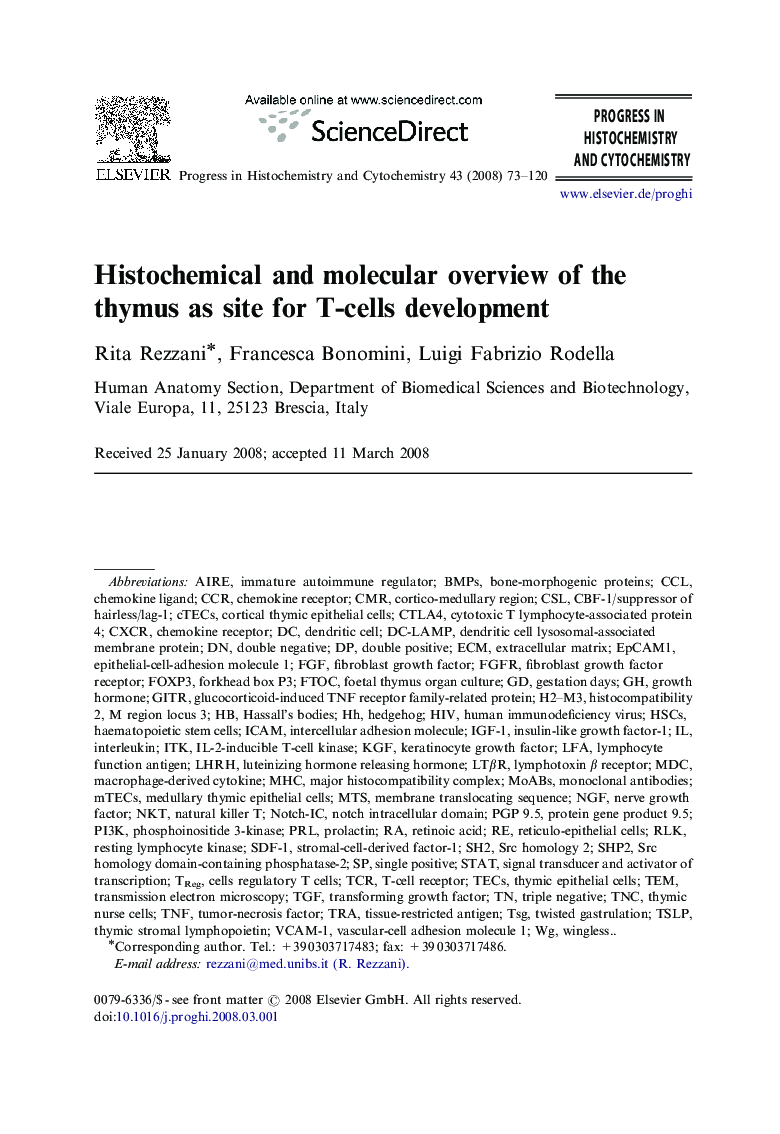| کد مقاله | کد نشریه | سال انتشار | مقاله انگلیسی | نسخه تمام متن |
|---|---|---|---|---|
| 2018952 | 1068362 | 2008 | 48 صفحه PDF | دانلود رایگان |

The thymus represents the primary site for T cell lymphopoiesis, providing a coordinated set for critical factors to induce and support lineage commitment, differentiation and survival of thymus-seeding cells. One irrefutable fact is that the presence of non-lymphoid cells through the thymic parenchyma serves to provide coordinated migration and differentiation of T lymphocytes. Moreover, the link between foetal development and normal anatomy has been stressed in this review. Regarding thymic embryology, its epithelium is derived from the embryonic endodermal layer, with possible contributions from the ectoderm. A series of differentiating steps is essential, each of which must be completed in order to provide the optimum environment for thymic development and function. The second part of this article is focused on thymic T-cell development and differentiation, which is a stepwise process, mediated by a variety of stromal cells in different regions of the organ. It depends strongly on the thymic microenvironment, a cellular network formed by epithelial cells, macrophages, dendritic cells and fibroblasts, that provide the combination of cellular interactions, cytokines and chemokines to induce thymocyte precursors for the generation of functional T cells. The mediators of this process are not well defined but it has been demonstrated that some interactions are under neuroendocrine control. Moreover, some studies pointed out that reciprocal signals from developing T cells also are essential for establishment and maintenance of the thymic microenvironment. Finally, we have also highlighted the heterogeneity of the lymphoid, non-lymphoid components and the multi-phasic steps of thymic differentiation.In conclusion, this review contributes to an understanding of the complex mechanisms in which the foetal and postnatal thymus is involved. This could be a prerequisite for developing new therapies specifically aimed to overcome immunological defects, linked or not-linked to aging.
Journal: Progress in Histochemistry and Cytochemistry - Volume 43, Issue 2, 15 July 2008, Pages 73–120